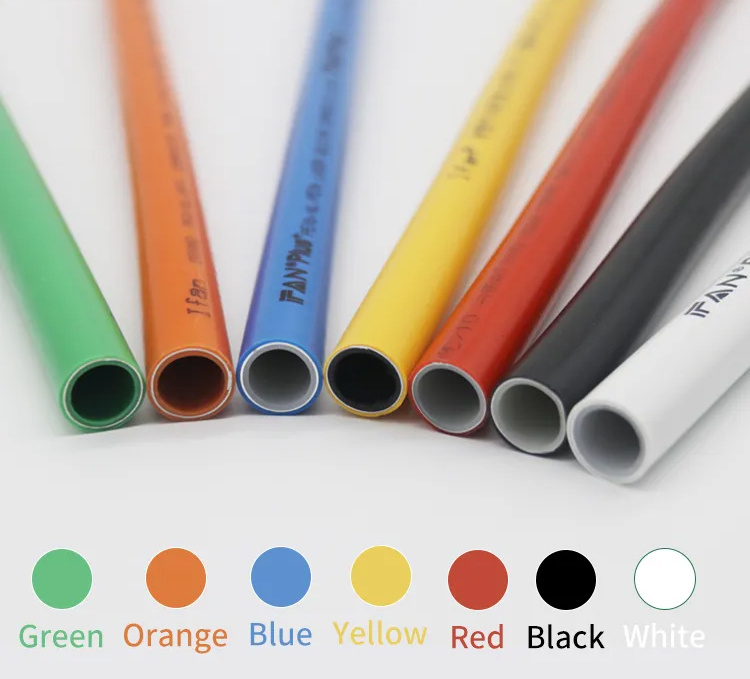Why Do Plumbers Not Use PEX?
Examining Contractor Concerns and Reluctance Regarding Crosslinked Polyethylene Plumbing
While PEX has gained significant adoption in residential and commercial plumbing, some plumbers remain reluctant to use it. Why do many contractors continue avoiding PEX piping systems? This article examines common plumber concerns creating resistance to the newer tubing material.IFAN factory with 30+ years of manufacturing experience supports color/size customization and free samples. Welcome to consult for catalog and free samples. This is our Facebook Website: www.facebook.com.

Lack of Experience Working with PEX
Many plumbers are trained only in working with copper, PVC, and other traditional rigid piping materials. They gain expertise in techniques like soldering copper and solvent welding PVC. Switching to an unfamiliar PEX presents a learning curve.
Working with flexible PEX tubing and making cold expansion or crimp connections may feel alien. Plumbers accustomed to copper have no experience with press tools or PEX installation nuances. The unfamiliarity creates unease.
PEX Concerns Over Longevity and Durability
PEX only gained U.S. plumbing approval relatively recently in the 1980s. Among old-school plumbers, the lack of a 50+ year track record like copper raises concerns about whether PEX will last.
If PEX piping fails after their work lifetime, plumbers worry about harming their professional reputation or liability issues. The shorter history of PEX makes predicting lifespan harder, causing reluctance.
Perceived Lower Value Compared to Copper
Many consumers view copper as a premium, high-value plumbing material. Some plumbers share the ingrained assumption copper must be better than newfangled plastics.
Plumbers may worry that PEX suggests lower-quality workmanship compared to prestigious copper. Or that repairs may be required sooner with PEX piping. The value perception gap slows PEX adoption.
Concerns About Difficult and Expensive Repairs
PEX plumbing failures cannot be repaired by simply patching small leaks. Failed PEX lines often must get entirely cut out and replaced.
Cutting access holes in walls, re-routing pipes, and adding new fittings make PEX repairs potentially labor-intensive compared to soldering small copper leaks. Leak concerns raise skepticism.
Proper Training for PEX is Not Widely Available
While PEX does not require advanced expertise, plumbers rightly prefer professional training before employing new materials and techniques. However, PEX instruction still lacks ubiquity in many areas.
If plumbers have no ready means to gain certified PEX training, they default to sticking with their existing competencies. Local access to PEX education would accelerate adoption.
Supply Chain Limitations for PEX Components
The plumbing supply ecosystem evolved over decades around copper and PVC. Some areas still lack distributors reliably stocking all needed PEX piping, fittings, and tools.
If plumbers cannot readily procure quality PEX system components locally, they cannot offer the service. Broad PEX distribution and support lower barriers.
PEX Cannot Directly Replace Copper in All Applications
PEX has temperature, pressure, and fire resistance limits that make copper still preferable in some specialty applications like high-rise buildings. PEX also does not work for exposed decorative piping.
Since PEX cannot provide a like-for-like substitute for copper in all cases, plumbers may still need to maintain some copper competency. This hinders full transition.
Higher Material Costs of PEX
PEX tubing remains priced at a premium over copper piping. Plumbers indicate material cost is a top factor in product selection. Paying more for PEX tubing cuts into profit margins.
However, PEX connection methods save substantial labor time versus soldering copper. Lower installation costs can offset the higher material costs, but price stigma remains a hindrance.
Addressing Concerns Accelerates PEX Adoption
While most contractor concerns lack hard data validation, they contribute to slowing PEX adoption. But specific actions can help plumbers gain confidence in PEX:
- Increased access to professional PEX training and certification
- Extended PEX manufacturer warranties against failure
- Improved distribution and inventory of PEX components
- Ongoing field studies confirming satisfactory PEX longevity
- Outreach to consumers regarding PEX benefits and capabilities
As PEX usage expands, evidence of successful performance will give reassurance. Ongoing engagement with contractors speeds gains in PEX acceptance.
IFAN
IFAN factory started in 1993. And IFAN has a workshop of 120000 square meters with 610 staff. IFAN can design and produce all plumbing pipe and fitting including PPR, PVC, CPVC PPSU HDPE PEXA PEXB PERT pipe and fitting, brass fitting, brass ball valve, heating system, gas system, sanitary faucets, and hose, In the past 30 years, IFAN has never forgotten his mission-To protect health and safety. And IFAN factory uses the best materials to produce high-quality pipe and fittings with an automatic production line and high-tech quality control machines.

